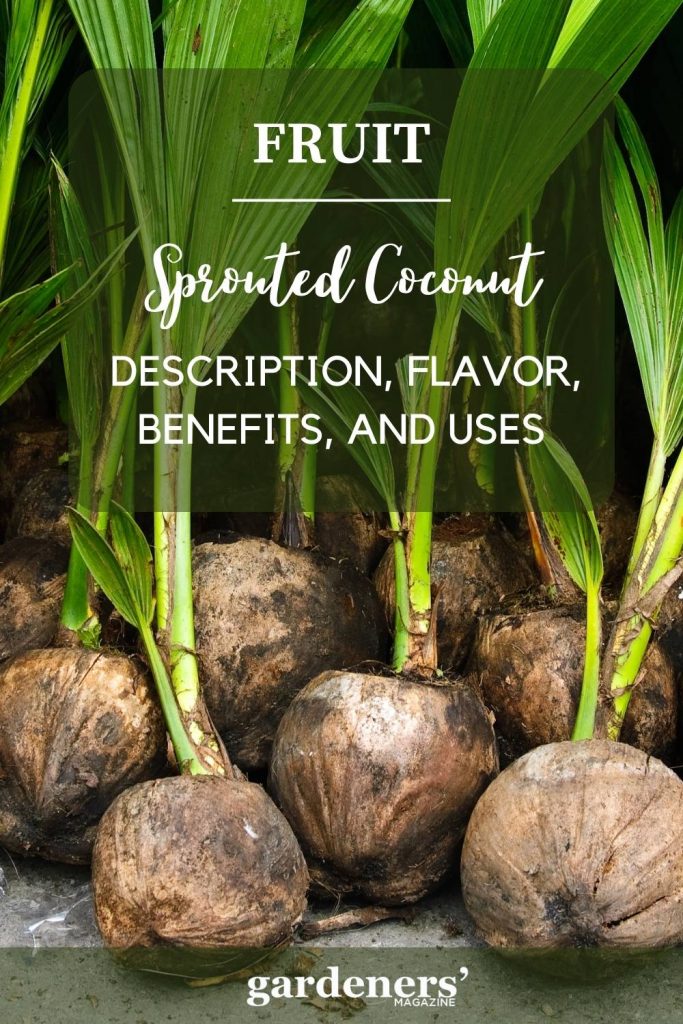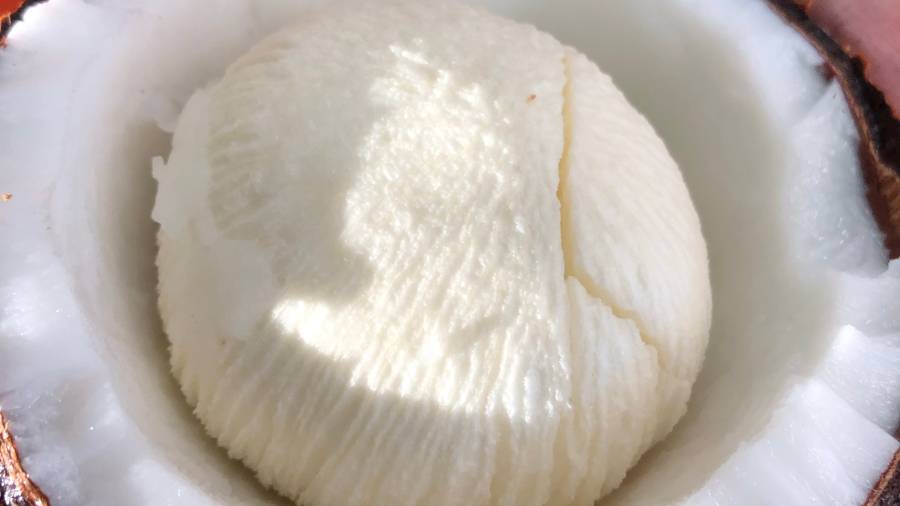Coconut sprouts, or coconut embryos, are a white, spongy substance in mature coconuts. It is, simply put, the germinated version of a mature coconut packed with nutrients. It has a unique flavor that can add depth and complexity to many dishes. Recently, they have gained popularity as a health food ingredient for various recipes. Here is everything you need to know about sprouted coconut.
What are Coconut Sprouts, and Why are They so Popular?
Sprouted coconut is a mature, germinated coconut that is soaked overnight in water. The soaking process activates enzymes and amino acids, making it easier to digest and absorb. It is safe to eat and has a sweet, nutty flavor and an abundance of vitamins and minerals like iron, zinc, magnesium, phosphorus, potassium, and Vitamin C.
Sprouted coconut provides benefits such as improved digestion, increased energy levels, and a stronger immune system. One cup of coconut sprouts contains around 140 calories, 8 grams of fiber, and 7 grams of protein. Since they are rich in dietary fiber and low in calories, they are ideal for those looking to lose weight or maintain a healthy diet.
When looking at protein-rich sprouts, one of the best is Alfalfa, also called the ‘king of sprouts’. Other sprouts with a high protein count are black beans, wheat grass, sunflower, mung beans, Edamame, and chickpea or garbanzo beans.

History and Origin of the Coconut Sprouts
Sprouted coconut first gained attention in the 1940s when researchers discovered its health benefits. In the 1960s, it began to be used as an alternative to mature coconuts. Sprouted coconut is now made by soaking a fully-ripened raw coconut in water for 24 hours and then allowing it to germinate. The result is a mildly sweet, nutty-flavored coconut packed with nutrients.
What are the Stages of Germination of Coconut Sprouts?
Coconut sprouts have a slow germination period of 4 months. The single cotyledon or the seed leaf grows inside the seed cavity. Within two weeks, it hardens and forms the first root on the underside, followed by the shoot on the upper side.
After several weeks, the outer shell and husk of the nut split open, allowing the roots to burst out. Note that once a coconut has sprouted, it grows at an accelerated pace, reaching 2-3 feet over a few months. The coconut palms take about 5 to 6 years to flower and may grow up to 30-60 feet tall.
Nutrients and Health Benefits of Coconut Sprouts
Sprouted coconut contains beneficial vitamins and minerals such as iron, zinc, magnesium, phosphorus, potassium, and Vitamin C. It’s also high in dietary fiber, which helps regulate digestion and aid in weight loss. The high carbohydrate, fiber and antioxidants in coconut sprouts help optimize maternal health and reduce the risk of hypertension during pregnancy. Additionally, the activated enzymes during the soaking process make sprouted coconut easier to digest and absorb.
Studies have also shown that consuming sprouted coconut regularly may provide several health benefits, such as improved digestion, increased energy levels, a stronger immune system, and better skin health.
If you are allergic to coconuts, always consult a medical practitioner before consuming them.
Season and Availability of Coconut Sprouts:
They are readily available all year in tropical climates. Healthy coconut trees produce anywhere from 100–200 coconuts annually. If you live in a non-tropical place, you can find them at local farmers’ markets or grocery stores selling exotic fruits.
How does Coconut Sprouts Compare with Regular Coconut?
Sprouted coconut differs from regular coconut in a few key ways:
- It has a sweeter, nuttier flavor than regular coconut. This can make it an excellent addition to recipes that call for coconut, such as smoothies and curries.
- The soaking process of sprouted coconut activates enzymes and amino acids not present in regular coconut. As a result, sprouted coconut has a higher concentration of vitamins and minerals than regular coconut.
- Regular coconut is raw or dried, while sprouted coconut is often steamed before being eaten.
Where are Coconut Sprouts Grown and Harvested?
Sprouted coconut is primarily grown in India, Thailand, and the Philippines. It is grown and harvested from mature raw coconuts soaked overnight.

Flavor Profile of the Coconut Sprouts
Sprouted coconut has a unique flavor profile that is slightly sweet with hints of nuttiness. It can be used as an ingredient in various dishes to add depth and complexity.
Where to Find the Best Quality Coconut Sprouts
Sprouted coconut is not widely available. However, it can be found in health food and specialty grocery stores. Additionally, it can sometimes be purchased online. It’s important to look for sprouted coconut that has been freshly soaked and properly stored, as this will ensure the highest quality and best taste. So it is always better to buy them at stores near you.
Can Dogs Eat Coconut Sprouts?
Dogs can eat coconuts but it could sometimes cause bloating and gastro-intestinal problems.
How to Store Coconut Sprouts?
The sprouted coconut should be stored in an airtight container in a cool, dry place. Refrigeration is not necessary, but it will help prolong the shelf life.
How to use Coconut Sprouts in Recipes?
When using sprouted coconut, it is important to remember that the flavor will be slightly different than regular coconut. It has a nutty, slightly sweet taste and can be used in sweet and savory dishes. The texture also varies depending on how long it was sprouted; if left longer, it becomes chewy.
Sprouted coconut is a great addition to recipes that call for other fruits or vegetables. It pairs well with apples, pears, carrots, and squash, providing extra flavor and texture to the dish. Adding a sprinkle of coconut will give the dish an interesting twist when making salads or stir-fries.
When using sprouted coconut in recipes, it is important to remember that it will add extra moisture to a dish. You may need to adjust the cooking time slightly or increase the temperature when baking. You should also reduce the amount of oil if you are sautéing or frying.
You will also hear them referred to as coconut pearls, coconut candy, coconut apples, or simply coconembryos, coconut cotyledons or coconapples.
- Everything You Wanted to Know About Red Tamarillos - June 2, 2025
- A Guide to Tulips: Everything You Need to Know & More… - June 2, 2025
- Guanabana: Description, Flavor, Benefits, And Uses - May 27, 2025

1 thought on “Coconut Sprouts: Description, Flavor, Benefits, And Uses”
Comments are closed.